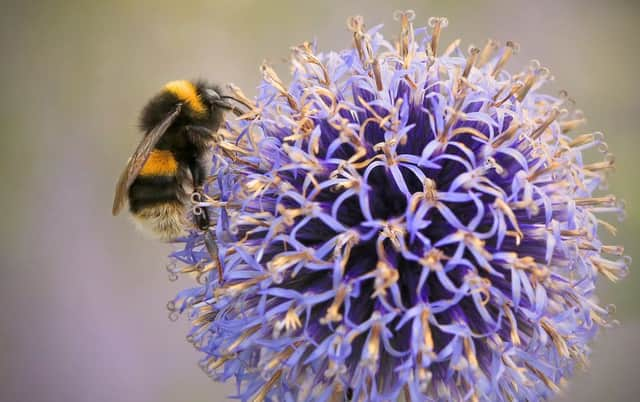Nothing gives us a buzz like bumblebees


BUMBLEBEES are one of the most familiar and endearing garden insects.
Hearing their distinctive buzz and spotting them dance from flower to flower epitomises a perfect summer’s day.
Advertisement
Hide AdAdvertisement
Hide AdThey are also vitally important for pollinating hundreds of plant species, including many crops that provide our food.
Sadly all our pollinators, not just bumblebees, have suffered from the loss of wild flowers and changes in land use and management, including the use of pesticides and herbicides.
Of the 27 species of bumblebee recognised to inhabit the UK, three are now extinct and five have suffered considerable declines in distribution.
Today, six bumblebee species are regularly found.
Our identification tips here should give you a helping hand to identify the ‘big six’ as well as a newcomer to the UK, the tree bumblebee.
Advertisement
Hide AdAdvertisement
Hide AdThe Wildlife Trust works closely with farmers, landowners and developers across Hampshire to promote wildlife-friendly practices.
Many of the farmers are seeking to encourage bees to their land by restoring habitats and sowing flower-rich field edges.
- Buff-tailed bumblebee:
This is named after the queen’s buff-coloured ‘tail’.
This common species is attracted to many types of flowers though its short tongue means it dislikes deeper flowers.
The queen, male and workers all have a yellow collar near the head and another on the abdomen.
Advertisement
Hide AdAdvertisement
Hide AdThe queen and the males have an off-white/buff colour ‘tail’.
- Tree bumblebee:
This is a relatively new arrival to the UK which was first recorded here in 2001. It is now slowly spreading north.
It visits a wide range of flowers, particularly those of soft fruits such as raspberries, bramble, and shrubs.
Tree bumblebees have a distinctive appearance with brown/orange hairs on the thorax, a black abdomen and white tail.
- White-tailed bumblebee:
Advertisement
Hide AdAdvertisement
Hide AdA very common bumblebee that emerges early in the spring and can be seen right through to the autumn.
As the name suggests, it has a white tail as well as a yellow band on the thorax and on the abdomen.
Look for their bright white tail.
For a free guide on identifying bees, and other wild things to do for the remainder of the summer, why not visit hiwwt.org.uk/my-wild-neighbourhood.